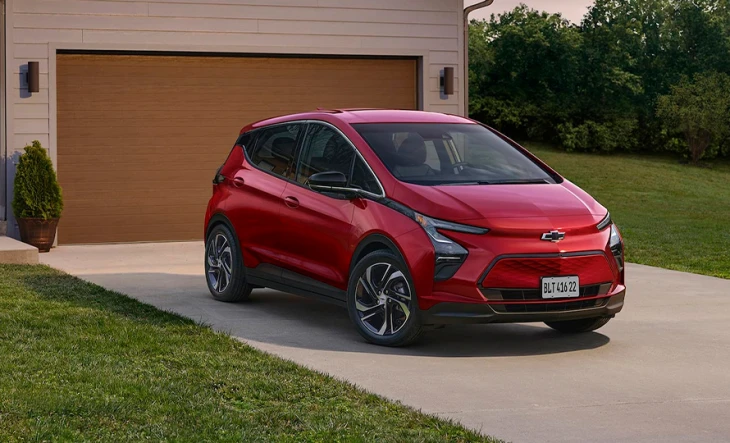In the rapidly evolving world of electric vehicles (EVs), battery technology is the beating heart driving innovation and change. As we gear up for 2024, a new contender is making headlines: sodium-ion batteries. According to recent reports from Bloomberg Green, these batteries could potentially reshape the landscape of electric mobility. Sodium-ion technology promises to be a game-changer, offering a sustainable and cost-effective alternative to the lithium-ion batteries that dominate the market today. In this article, we’ll explore how sodium-ion batteries could revolutionize electric cars, their potential benefits, and what this means for the future of sustainable transportation.
The Rise of Sodium-Ion Batteries: A New Era for EVs
Why Sodium-Ion Batteries?
Sodium-ion batteries are garnering attention due to their abundance and cost-effectiveness. Unlike lithium, sodium is plentiful and widely available, reducing the geopolitical risks associated with lithium extraction. According to the International Energy Agency (IEA), the global demand for lithium is expected to increase by 40% by 2030, making sodium an attractive alternative. Here are some key advantages of sodium-ion batteries:
- Cost Efficiency: Sodium is significantly cheaper than lithium, which could reduce battery costs by 20-40%.
- Abundant Supply: Sodium is the sixth most abundant element on Earth, ensuring a stable supply chain.
- Environmental Impact: Sodium-ion batteries have a lower environmental footprint compared to lithium-ion, as they do not require rare earth metals.
How Sodium-Ion Batteries Work
The science behind sodium-ion batteries is similar to their lithium counterparts. They operate by shuttling sodium ions between the anode and cathode during charging and discharging. According to a report from Battery University, recent advances in electrode materials have improved the energy density and lifespan of sodium-ion batteries, making them viable for EV applications.
Current Developments and Players
Several companies are at the forefront of sodium-ion battery development. In 2024, BYD and CATL, two major players from China, have announced plans to integrate sodium-ion technology into their vehicles. According to InsideEVs, these manufacturers are conducting extensive testing to ensure performance parity with existing lithium-ion solutions.
The Impact on Electric Vehicles
Benefits for Electric Cars
Sodium-ion batteries hold the potential to address several challenges faced by current EVs:
- Cost Reduction: With sodium being cheaper, manufacturers can reduce the overall cost of electric cars, making them more accessible to a broader audience.
- Improved Charging Infrastructure: Sodium-ion batteries can be charged using existing infrastructure, aligning with the current EV ecosystem.
- Enhanced Safety: Sodium-ion batteries are less prone to overheating, reducing the risk of thermal runaway incidents.
Performance Comparison: Sodium-Ion vs. Lithium-Ion
- Energy Density: Although sodium-ion batteries currently have a lower energy density than lithium-ion, ongoing research aims to close this gap.
- Cycle Life: Sodium-ion batteries are expected to offer comparable cycle life to lithium-ion, with some prototypes achieving over 2,000 charge cycles.
- Operational Temperature Range: Sodium-ion batteries perform well in a wider range of temperatures, which is crucial for vehicles operating in extreme climates.
Real-World Applications
As of 2024, several pilot projects are underway to test sodium-ion batteries in real-world conditions. According to Reuters Mobility, a partnership between Nissan and the University of Tokyo aims to develop sodium-ion-powered EVs for the Japanese market, showcasing the technology’s potential.
Practical Insights for EV Enthusiasts
How to Charge Sodium-Ion Battery EVs
Charging a sodium-ion battery vehicle is similar to charging any other EV. Here are some tips:
- Use Existing Chargers: Most public charging stations are compatible with sodium-ion vehicles.
- Monitor Charging Times: Sodium-ion batteries may offer faster charging times, reducing wait periods.
- Stay Informed: Keep an eye on manufacturer updates for optimal charging practices.
Where to Buy Sodium-Ion Battery EVs
As sodium-ion technology is still emerging, availability may be limited initially:
- BYD and CATL Models: Watch for announcements from these manufacturers regarding new models.
- Local Dealerships: Inquire about upcoming sodium-ion models and pre-order options.
What to Compare
When considering a sodium-ion vehicle, compare the following:
- Cost vs. Lithium-Ion Models: Evaluate potential savings and performance differences.
- Range: Assess the vehicle’s range per charge to ensure it meets your needs.
- Warranty and Support: Check for manufacturer warranties and available support for sodium-ion technology.
Conclusion: The Future of Sustainable Mobility
Sodium-ion batteries are poised to make a significant impact on the electric vehicle industry. With their cost advantages and sustainable supply chain, these batteries could democratize access to electric mobility and drive the transition towards a greener future. As we look ahead to 2024 and beyond, the potential of sodium-ion technology is immense, offering a glimpse into a world where electric cars are not just a luxury, but a practical choice for everyone. What do you think about the future of sodium-ion batteries? Could they be the catalyst for widespread EV adoption?
As the industry evolves, staying informed and open to emerging technologies like sodium-ion batteries will be key to embracing the future of sustainable transportation. Keep an eye on developments in this space and join the conversation about how we can create a cleaner, more efficient world.

